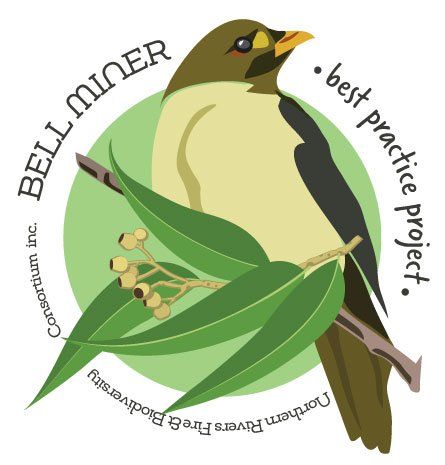Assisted or Natural Regeneration
The objective of any bush regeneration project is to restore or re-establish native vegetation cover following weed control. This will either happen naturally or it may require some assistance (e.g. hand weeding, planting). In a healthy forest, native regrowth is often guaranteed through different seed dispersal from local sources and can be left to its own devices. However, in BMAD-affected forests, the scale of disturbance and decline can be so great that native species diversity is permanently damaged and assisted natural regeneration is required to ensure forest structure and diversity is restored.
Natural Regeneration
Factors affecting natural regeneration potential include the availability of seeds, seed dispersal and diversity. AN explanation of each is provided below.
Availability of Seeds
Natural regeneration is based on the availability of seeds, either from fresh inputs or from seed reserves persisting in the soil. Often, the soil seed bank will be viable, and weed removal with some enrichment (minor soil disturbance, warm soil temperatures and moisture) will be enough to stimulate natural recruitment (growth of seedlings). Natural regeneration is by far the most cost effective BMAD restoration measure following weed control, so it is worth monitoring a site for its recruitment potential before deciding whether or not to suplementary plant. However, in forests that have been smothered by lantana for longer periods, there may less germination from soil seed banks and revegetation or longer waiting times for natural recruitment from nearby sources may be required.
Seed Dispersal
Having a good local seed source is critical, however, its the ability of those seed to disperse to site that determines whether a site will naturally regenerate or will need assistance. Seed dispersal is achieved by:
- Gravity – Seed falls to ground
- Animals – Seed is digested or carried
- Wind – Seed gets blown
- Water – Seed enters water way
- Ballistic – Seed is catapulted away
- Human – Seed is accidentally or deliberately dispersed
Depending on the scale of a BMAD-affected sites, local seed sources may be damaged or too far way to assist and the site will need to rely almost entirely on the soil seed bank for eucalypt germination given the canopy is damaged and may not have had the capacity to set seed for some time. This should be monitored and either planting or direct seeding, of missing species may be required.
Diversity
A forest rich in species supports gene flow across the landscape and helps maintain the gene pool for local indigenous plants. It also supports a grater array of native animals. Diversity is key to increasing species capacity to adapt to pathogens and a changing climate over time - survival of the fittest is easy to achieve when there are many of you. In order to achieve a healthy forest structure, plant diversity and abundance should be maintained at each size class (age and height). A simple assessment of plant abundance will provide a more in-depth account of the absence or lack of vital canopy species and missing early, later, and mature successional stage species. This information is also important when considering whether assisted revegetation is required to help you design and appropriate planting list.
Assisted Regeneration
Assisted regeneration is the restoration of natural habitat through planting (direct seeding) or by enabling natural regeneration by hand weeding to enable native species to get a head of the competition (native or weed). In severely BMAD affected sites where mid-storey density has persisted for a long time and there isn’t much recruitment from the soil or elsewhere post weed control, planting may be needed. The aim of planting is to establish viable, self-sustaining populations which will form mature stable forests with the ability to adapt to environmental change over time. Planting needs to be well planned and maintained in its early stages to be effective, so consider carefully whether to plant and when you p[lant (avoid dry times and forecast drought periods). Planting that is poorly planned and not looked after can result in poor outcomes.
For more information, check out the Byron Shire Bush Regeneration guidelines below:
Fire to Assist Natural Regeneration
Fire can be an incredibly useful tool to increase native seed renewal, particularly in dry sclerophyll forests. Used in conjunction with herbicide, fire can reduce weed biomass and manage mid-storey layer issues, however, in the case of incorrect fire regimes this can have the opposite effect. Incorrect fire regimes are driven by inappropriate timing between fires, fire intensity, weather, fuel load, moisture content and vegetation type. In vulnerable ecosystems, incorrect fire regimes may weaken or diminish recovery capabilities or result in the damage or permanent loss of fire-sensitive plants and vegetation communities. It is important to seek specialist advice when using fire as part of an integrated weed control plan for BMAD management projects.

Northern Rivers Fire & Biodiversity Consortium inc.
This project is supported by North Coast Local Land Services, through funding from the
Australian Government’s National Landcare Program and the NSW Department of Planning, Industry and Environment
through funding from the Saving Our Species Program.
